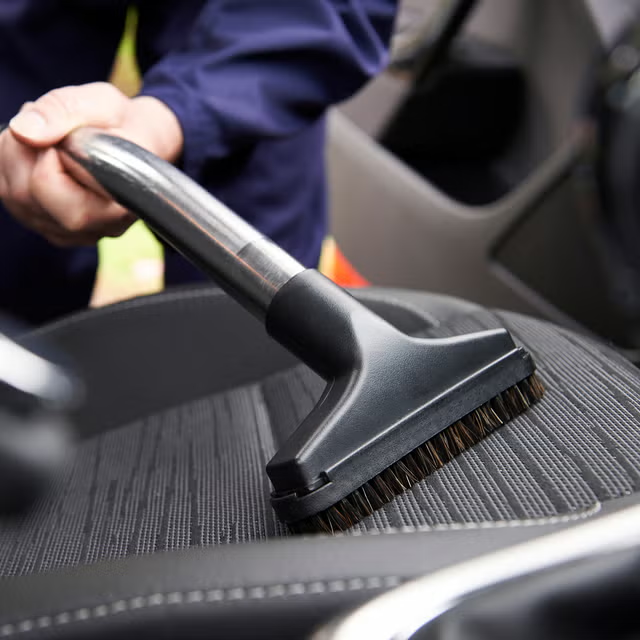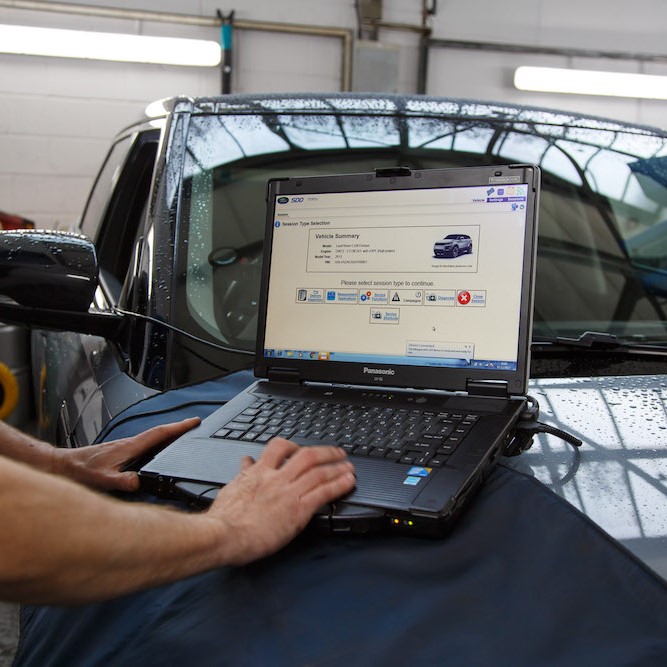A clean car is more than just aesthetically pleasing; it can also contribute to your overall driving experience and vehicle’s longevity. Regular cleaning not only removes dirt and grime but also helps to prevent rust and corrosion. In this comprehensive guide, we’ll explore various car cleaning techniques, products, and tips to keep your vehicle looking and feeling its best.
Removing stains and spills from upholstery
Accidents happen, and stains and spills can be a common occurrence in car upholstery. Here’s a guide on how to remove various types of stains:
General Tips:
- Act Quickly: The sooner you address a stain, the easier it will be to remove.
- Blot, Don’t Rub: Rubbing can push the stain deeper into the fabric. Instead, blot gently with a clean, absorbent cloth.
- Test in a Hidden Area: Before using any cleaning solution, test it in a hidden area to ensure it doesn’t cause discoloration or damage.
Common Stains and Removal Methods:
- Coffee and Tea: Blot up as much of the liquid as possible. Apply a mixture of equal parts white vinegar and water to the stain. Blot gently and rinse with clean water.
- Soda and Juice: Blot up the liquid and apply a mild detergent solution. Blot gently and rinse with clean water.
- Food Stains: For greasy food stains, use a degreaser or a mixture of dish soap and water. Blot gently and rinse. For non-greasy food stains, follow the same steps as for coffee and tea.
- Blood: Blot up as much blood as possible with cold water. Apply a mixture of hydrogen peroxide and water (1:1 ratio) to the stain. Blot gently and rinse with cold water.
- Ink: Apply rubbing alcohol to the stain and blot gently. Rinse with clean water.
- Pet Accidents: Blot up as much of the liquid as possible. Use a pet stain remover or a mixture of white vinegar and water. Blot gently and rinse with clean water.
- Vomit: Blot up as much vomit as possible. Use a pet stain remover or a mixture of white vinegar and water. Blot gently and rinse with clean water.
Exterior Cleaning
-
Washing:
- Prepare: Start by washing your car in a shaded area to prevent water spots. Use a gentle car wash soap and a soft microfiber wash mitt or sponge.
- Rinse: Thoroughly rinse your car to remove any soap residue.
- Dry: Use a clean, dry microfiber towel to gently dry your car. Avoid rubbing too hard, as this can cause swirl marks.
-
Wheel Cleaning:
- Spray: Apply a dedicated wheel cleaner to your wheels.
- Scrub: Use a soft-bristled brush or wheel brush to remove dirt and brake dust.
- Rinse: Thoroughly rinse the wheels with clean water.
-
Waxing:
- Prepare: Ensure your car is clean and dry before applying wax.
- Apply: Apply a thin, even coat of wax to the paint using a soft applicator pad.
- Buff: Allow the wax to cure for the recommended time, then buff it off with a clean microfiber towel.
-
Tire Dressing:
- Apply: Apply a tire dressing to your tires using a sponge or applicator.
- Spread: Evenly distribute the dressing across the tire’s surface.
- Wipe: Remove any excess dressing with a clean cloth.
-
Glass Cleaning:
- Spray: Apply a glass cleaner to your windshield, rear window, and side mirrors.
- Wipe: Use a clean, microfiber cloth to wipe the glass clean.

Engine and undercarriage cleaning
Regular cleaning of your engine and undercarriage is essential for several reasons:
- Improved Performance: A clean engine can help improve fuel efficiency and overall performance.
- Longevity: Cleaning removes corrosive elements that can damage components and reduce the lifespan of your vehicle.
- Safety: A clean undercarriage can help prevent rust and corrosion, which can compromise the structural integrity of your vehicle.
Preparing for Cleaning:
- Safety First: Wear protective gear, including gloves, goggles, and a mask, to avoid exposure to harmful chemicals and debris.
- Cool Engine: Allow the engine to cool completely before starting the cleaning process.
- Disconnect Battery: Disconnect the battery to prevent electrical shorts.
Engine Cleaning:
- Spray Degreaser: Apply a powerful engine degreaser to all exposed surfaces of the engine.
- Scrub: Use a soft-bristled brush to scrub away stubborn dirt and grime.
- Rinse: Use a high-pressure hose to rinse away the degreaser and debris.
- Dry: Use microfiber towels to dry the engine thoroughly.
Undercarriage Cleaning:
- Drive Onto Ramps: Drive your vehicle onto ramps to access the undercarriage.
- Spray Cleaner: Apply an undercarriage cleaner to the underside of your vehicle.
- Pressure Wash: Use a high-pressure washer to remove dirt, salt, and rust.
- Inspect: Inspect the undercarriage for any signs of damage or corrosion.

Interior Cleaning
-
Vacuuming:
- Remove: Remove any trash or debris from your car.
- Vacuum: Vacuum the seats, carpets, and floor mats thoroughly. Pay attention to areas under the seats and in the footwells.
-
Cleaning Surfaces:
- Wipe: Use a cleaning solution and a microfiber cloth to wipe down all interior surfaces, including the dashboard, doors, and center console.
- Protect: Apply a protectant to leather or vinyl surfaces to help maintain their appearance and prevent cracking.
-
Cleaning Carpets and Upholstery:
- Spot Clean: For stains, use a carpet cleaner or upholstery cleaner and a soft-bristled brush.
- Deep Clean: For more stubborn stains or deep cleaning, consider using a professional detailing service.
Recommended products and tools for engine and undercarriage cleaning
Cleaning your engine and undercarriage is crucial for maintaining your vehicle’s performance and longevity. Here are some recommended products and tools to get the job done:
Engine Cleaning:
- Engine Degreaser: A powerful engine degreaser can effectively remove dirt, grime, and oil from your engine compartment. Look for a degreaser that is safe for use on various engine components, including plastic, rubber, and metal.
- Brush: A soft-bristled brush is ideal for scrubbing away stubborn dirt and grime from engine components.
- Hose: A high-pressure hose can be used to rinse away degreaser and debris from your engine.
- Microfiber Towels: Use microfiber towels to dry your engine and remove any remaining degreaser residue.
Undercarriage Cleaning:
- Undercarriage Cleaner: A specialized undercarriage cleaner can remove dirt, salt, and rust from the underside of your vehicle.
- Pressure Washer: A pressure washer is the most effective tool for cleaning the undercarriage. Ensure it has a high pressure setting to remove stubborn dirt and grime.
- Wheel Brushes: Use wheel brushes to clean the undercarriage’s crevices and hard-to-reach areas.
- Protective Gear: Wear protective gear, including gloves, goggles, and a mask, when cleaning your undercarriage to avoid exposure to harmful chemicals.

Additional Tips
- Regular Maintenance: Clean your car regularly to prevent dirt and grime from building up.
- Protect from the Sun: Park your car in the shade whenever possible to prevent fading and damage to the interior.
- Use Quality Products: Invest in high-quality car cleaning products to get the best results.
- Avoid Harsh Chemicals: Avoid using harsh chemicals that can damage the paint or interior surfaces.
- Consider Professional Detailing: For a deep clean or to remove stubborn stains, consider hiring a professional detailing service.

Using appropriate cleaning products and tools
Selecting the right cleaning products and tools is essential for achieving a thorough and effective car clean. Here’s a breakdown of some key considerations:
Cleaning Products:
- Car Wash Soap: Opt for a pH-neutral car wash soap specifically designed for automotive use. Avoid harsh detergents that can strip away wax and damage the paint.
- Glass Cleaner: Choose a glass cleaner formulated for automotive use to prevent streaking and residue.
- Interior Cleaner: Select an interior cleaner that is suitable for the specific materials in your car, such as leather, vinyl, or fabric.
- Tire Dressing: Choose a tire dressing that provides a natural or glossy finish, depending on your preference.
- Wax or Sealant: Decide whether you want to use a wax or sealant to protect your car’s paint. Wax provides a temporary protective layer, while sealants offer longer-lasting protection.
- Detailing Spray: A detailing spray can be used to remove light dust and fingerprints between washes.
Cleaning Tools:
- Wash Mitt or Sponge: Use a soft microfiber wash mitt or sponge to avoid scratching the paint.
- Wheel Brush: A wheel brush with soft bristles is ideal for cleaning rims and tires.
- Microfiber Towels: Microfiber towels are highly absorbent and gentle on surfaces. Use them for drying your car and wiping down interior surfaces.
- Applicator Pads: Use applicator pads to apply wax or sealant to your car’s paint.
- Vacuum: A handheld vacuum is essential for cleaning the interior of your car.
- Brushes and Brushes: Use brushes and brushes to clean tight spaces and crevices.
- Bucket: A bucket is necessary for mixing car wash soap and water.

By following these tips and techniques, you can keep your car looking and feeling its best. Regular cleaning not only improves your driving experience but also helps to maintain your vehicle’s value. Remember, a clean car is a happy car!





